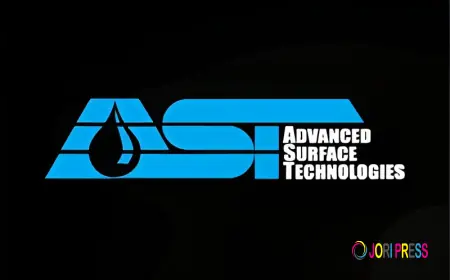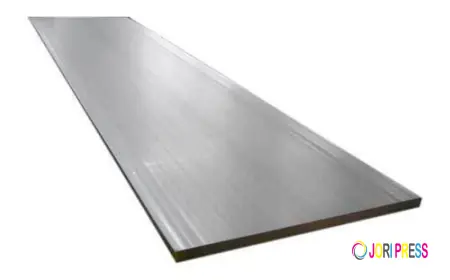Ad Banner Calculator: Never Get Your Ad Rejected Again (Complete Guide)

Navigating the world of digital advertising can feel overwhelming, especially when you're trying to figure out the right dimensions for your ad banners. Whether you're a small business owner launching your first campaign or a marketing professional managing multiple clients, understanding ad banner sizes is crucial for maximizing your campaign's effectiveness. An ad banner calculator simplifies this process, helping you determine the perfect dimensions for your advertisements across various platforms and placements.
What Is an Ad Banner Calculator?
An ad banner calculator is a practical tool designed to help advertisers, designers, and marketers determine the correct dimensions and specifications for digital banner advertisements. These calculators provide instant recommendations based on industry standards, platform requirements, and placement types. Instead of memorizing dozens of banner sizes or constantly referencing specification sheets, you can quickly access the information you need to create properly formatted advertisements.
The tool works by allowing you to select your advertising platform, placement location, or campaign objective, then instantly providing the recommended dimensions in pixels. This ensures your creative assets meet platform requirements and display correctly across different devices and screen sizes.
Why Banner Size Matters for Your Advertising Success
The dimensions of your ad banner directly impact its visibility, performance, and approval status on advertising platforms. Using incorrect sizes can result in rejected ads, distorted images, or poor user experiences that harm your brand reputation.
Standard banner sizes have evolved based on years of data showing which formats generate the highest engagement rates. The Interactive Advertising Bureau (IAB) established these standards to create consistency across the digital advertising ecosystem. When you use standardized sizes, you ensure compatibility with most advertising networks and websites, maximizing your reach without creating multiple custom versions.
Platform algorithms often favor properly sized advertisements because they integrate seamlessly into the user experience. Oversized or undersized banners can disrupt page layouts, leading to lower placement priority or outright rejection. Just like how a Credit Card Payoff Calculator helps you plan financial decisions with precision, using the right banner dimensions ensures your advertising investments deliver maximum returns.
Common Ad Banner Sizes You Need to Know
Understanding the most widely used banner dimensions helps you plan your creative assets effectively. Here are the essential formats:
Medium Rectangle (300×250 pixels): This versatile format works well within content areas and sidebars, making it one of the most popular choices for both desktop and mobile placements.
Leaderboard (728×90 pixels): Typically positioned at the top of web pages, this horizontal banner captures attention without overwhelming the content below.
Wide Skyscraper (160×600 pixels): Perfect for sidebar placements, this vertical format provides ample space for detailed messaging and multiple call-to-action elements.
Large Rectangle (336×280 pixels): Similar to the medium rectangle but with additional space for more compelling visuals and text.
Mobile Banner (320×50 pixels): Specifically designed for mobile devices, this compact format fits neatly at the top or bottom of smartphone screens.
Half Page (300×600 pixels): This tall format offers premium visibility in sidebar placements, providing significant real estate for storytelling.
How to Use an Ad Banner Calculator Effectively
Maximizing the benefits of an ad banner calculator requires a strategic approach. Follow these steps to get the most accurate recommendations:
-
Identify your advertising platform: Different platforms have unique requirements, so start by selecting where your ads will appear—social media, display networks, or specific websites.
-
Determine your placement location: Consider whether your banner will appear in headers, sidebars, within content, or as interstitials, as each position has optimal dimensions.
-
Consider your campaign objectives: Brand awareness campaigns might benefit from larger, more prominent sizes, while retargeting efforts might use smaller, less intrusive formats.
-
Check mobile responsiveness: Ensure the recommended size displays properly on smartphones and tablets, as mobile traffic continues to dominate web usage.
-
Plan for multiple sizes: Creating ads in several standard dimensions increases your campaign's reach across different placements and platforms.
-
Review file size limitations: Beyond dimensions, confirm your final creative file meets platform-specific file size requirements, typically measured in kilobytes.
-
Test across devices: Before launching, preview your banners on various screen sizes to ensure they maintain visual integrity and readability.
Creative Considerations for Banner Advertisements
Once you've determined the correct dimensions, focus on creating compelling content within those constraints. Limited space means every pixel counts, so prioritize clear messaging and strong visuals.
Your headline should communicate value immediately, as viewers typically spend only seconds deciding whether to engage with an advertisement. Use high-quality images that remain sharp and recognizable even at smaller sizes. Color contrast helps your call-to-action button stand out against the background, improving click-through rates.
Typography plays a crucial role in banner effectiveness. Choose fonts that remain legible at various sizes and avoid cluttering your design with too many typefaces. Leave adequate white space to prevent your banner from feeling cramped or overwhelming.
Animation can increase engagement, but use it purposefully rather than excessively. Subtle motion draws the eye without annoying viewers, while excessive animation can trigger banner blindness or violate platform policies. When planning seasonal campaigns, you might want to check how many days until Christmas to time your banner advertisements for maximum holiday impact.
Platform-Specific Requirements
Each advertising platform maintains unique specifications beyond basic dimensions. Social media networks often require square or vertical formats that differ from traditional display advertising. Search engines have specific requirements for text-to-image ratios and acceptable file formats.
Review platform guidelines carefully before finalizing your designs, as requirements change periodically. Some platforms automatically resize submitted images, potentially degrading quality or cropping important elements. Understanding these nuances helps you create ads that maintain visual integrity across all placements.
Optimizing Your Banner Performance
Beyond getting the dimensions right, tracking your banner performance is essential for campaign success. Monitor click-through rates, conversion rates, and engagement metrics to understand which sizes and placements work best for your audience.
A/B testing different banner sizes helps identify the most effective formats for your specific goals. Consider factors like audience demographics, device preferences, and browsing behavior when analyzing results. If you're running location-based campaigns with delivery services, a Miles per Gallon Calculator can help you optimize your logistics costs while your banners drive customer acquisition.
Building Team Engagement Through Banner Campaigns
Creating effective banner campaigns often involves collaboration between designers, copywriters, and marketing strategists. Building strong team dynamics can significantly improve your campaign outcomes. For team-building exercises during brainstorming sessions, tools like a Name Compatibility Calculator or love calculator by name can add fun elements to your meetings while fostering stronger working relationships. When teams work well together, they create more compelling banner advertisements that resonate with target audiences.
Getting Started with Your Banner Campaigns
Armed with knowledge about proper banner dimensions and design principles, you're ready to create effective advertisements that capture attention and drive results. Remember that successful campaigns combine proper technical specifications with compelling creative content and strategic targeting.
As you explore different tools for your marketing and business needs, Calculator Central offers a comprehensive collection of resources to simplify your calculations and planning. Whether you need precise measurements for your ad campaigns or assistance with various business calculations, having reliable tools makes managing your marketing efforts more efficient. The right tools, combined with proper banner specifications, set the foundation for advertising success.
Frequently Asked Questions
-
What's the best ad banner size for beginners?
The medium rectangle (300×250 pixels) is ideal for beginners because it's universally accepted across most platforms, works well on both desktop and mobile devices, and offers sufficient space for effective messaging without requiring extensive design expertise.
-
Can I use the same banner size for all advertising platforms?
While some sizes work across multiple platforms, creating platform-specific versions yields better results. Each platform optimizes for certain dimensions, and using recommended sizes ensures maximum visibility and engagement for your investment.
-
How does file format affect my ad banners?
Most platforms accept JPEG, PNG, and GIF formats, with some supporting HTML5 for animated content. PNG files preserve quality better but create larger file sizes, while JPEG offers good compression for photographs. Choose based on your content type and platform requirements.
-
Why was my ad banner rejected despite correct dimensions?
Rejection can occur due to file size exceeding limits, inappropriate content, text-heavy designs, or animations that violate duration policies. Review the specific rejection reason provided and adjust accordingly, ensuring compliance with all platform guidelines beyond just dimensions.
-
Should I create responsive banners or multiple fixed sizes?
Both approaches have merit. Creating multiple fixed-size versions ensures perfect optimization for each placement, while responsive designs adapt automatically to available space. For maximum control and performance, many advertisers create several standard sizes rather than relying solely on responsive scaling.
What's Your Reaction?
 Like
0
Like
0
 Dislike
0
Dislike
0
 Love
0
Love
0
 Funny
0
Funny
0
 Angry
0
Angry
0
 Sad
0
Sad
0
 Wow
0
Wow
0





















































